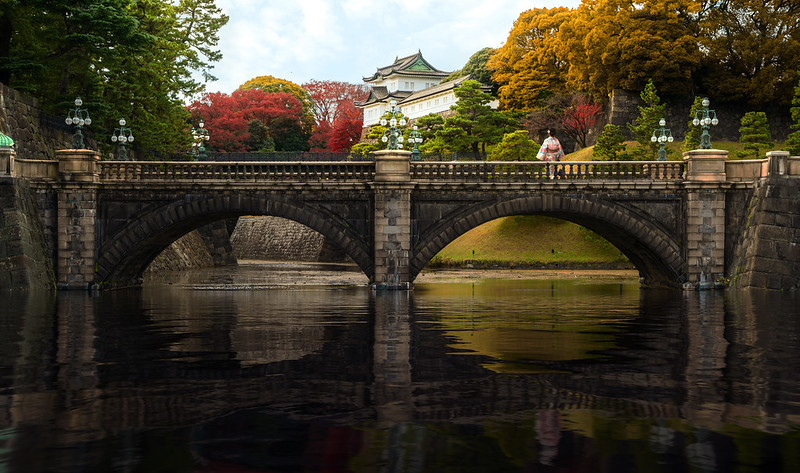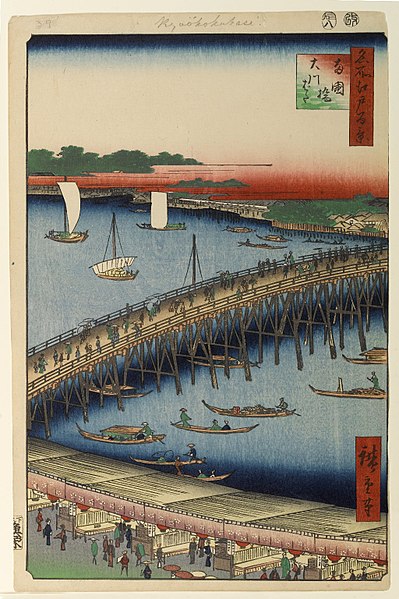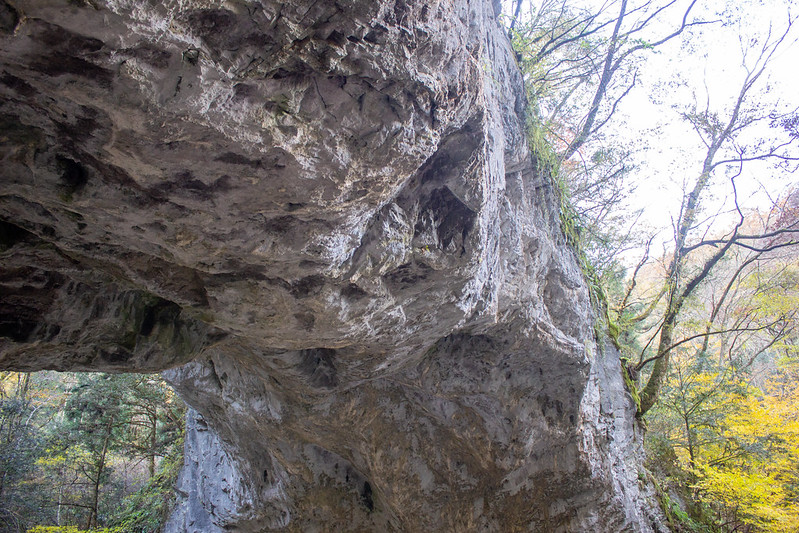
More Incredible Japanese Bridges
The ancient Romans are considered the greatest bridge builders of antiquity. They built arch bridges and aqueducts that could withstand the harshest of conditions, with some still standing today. One such example is the Alcántara Bridge on the river Targus, in Spain. Over time, bridges became even more important in connecting lands separated by water. Even more remarkable are bridges that are not even manmade but formed naturally.
Ryogoku Bridge and the Great Riverbank No 59 from One Hundred Views of Edo – Utagawa Hiroshige
Today, many bridges are more than just a means to get to another end, but rather wondrous architectural structures that leave us in awe on how far we’ve gone.
Japan has its own share of magnificent bridges throughout history. Here are a few:
The Ryōgoku Bridge in Tokyo was built in 1659. It is in the junction of the Sumida and the Kanda Rivers. Its name means Two Provinces, coming from joining Edo in Musashi Province (Tokyo Metropolis today) and Shimōsa Province (modern day Chiba Prefecture). The neighborhood at the east end of the bridge is Ryōgoku, where its name was derived from.
On-bashi Bridge.
On-bashi Bridge in Hiroshima, Chugoku, is a natural bridge that formed from a massive limestone rock that originally dammed a river. Over time, the limestone eroded and a hole formed the On-bashi Bridge about 2 million years ago. It measures about 90 meters long and 19 meters wide, with a height of 40 meters (as tall as a 10 story building). It is designated a natural monument of Japan.
 Nijubashi (Double Bridge).
Nijubashi (Double Bridge).
Meganebashi or Spectacles Bridge in Nagasaki was built in 1634 by the Japanese monk Mokusu of Kofukuji Temple. It is considered the oldest stone arch bridge in Japan and is designated as an Important Cultural Property. It is called Spectacles Bridge because of its two arches and the reflection they make in the water that looks like spectacles.
The Imperial Palace in Tokyo, the official residence of the Imperial Family also has a famous Meganebashi, a stone bridge that also makes a reflection of spectacles in the water and another former wooden bridge. From the large plaza in front of the palace, visitors can view both bridges known as the Nijubashi (Double Bridge), two bridges that make the entrance to the inner grounds of the Imperial Palace.


